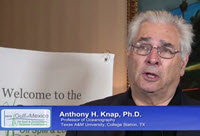The Deep-sea Risk Assessment and species sensitivity to WAF, CEWAF and Dispersant project is lead by P.I. Anthony Hayden Knap, Texas A&M University.
Subsea injection of dispersants offers some significant benefits compared to the application of dispersants on the sea surface, for example access to the freshest and non-emulsified oil in the high turbulence environment, ability to reduce the volume of required dispersant by injecting it directly into the oil stream without the loss of the product, ability to operate day and night under a wider range of weather conditions, and availability of a large water mass to rapidly decrease the concentration of a dispersed oil intrusion. Although dispersant application at the sea surface has been extensively studied, more data are needed on the efficiency and environmental impacts of dispersed oil in the subsea to evaluate and document acceptability of this response technique.
We will test a series of deep sea organisms to the effect of specific individual hydrocarbons, as well as WAF, CEWAF and Dispersant. If successful, we are hoping to develop a new method for the effects of contaminants on marine organisms.
Click for access to GoMRI’s YouTube videos of RFP-V Projects…
************
This project was funded by the Gulf of Mexico Research Initiative (GoMRI) in the RFP-V funding program.
The Gulf of Mexico Research Initiative (GoMRI) is a 10-year independent research program established to study the effect, and the potential associated impact, of hydrocarbon releases on the environment and public health, as well as to develop improved spill mitigation, oil detection, characterization and remediation technologies. An independent and academic 20-member Research Board makes the funding and research direction decisions to ensure the intellectual quality, effectiveness and academic independence of the GoMRI research. All research data, findings and publications will be made publicly available. The program was established through a $500 million financial commitment from BP. For more information, visit http://gulfresearchinitiative.org/.

